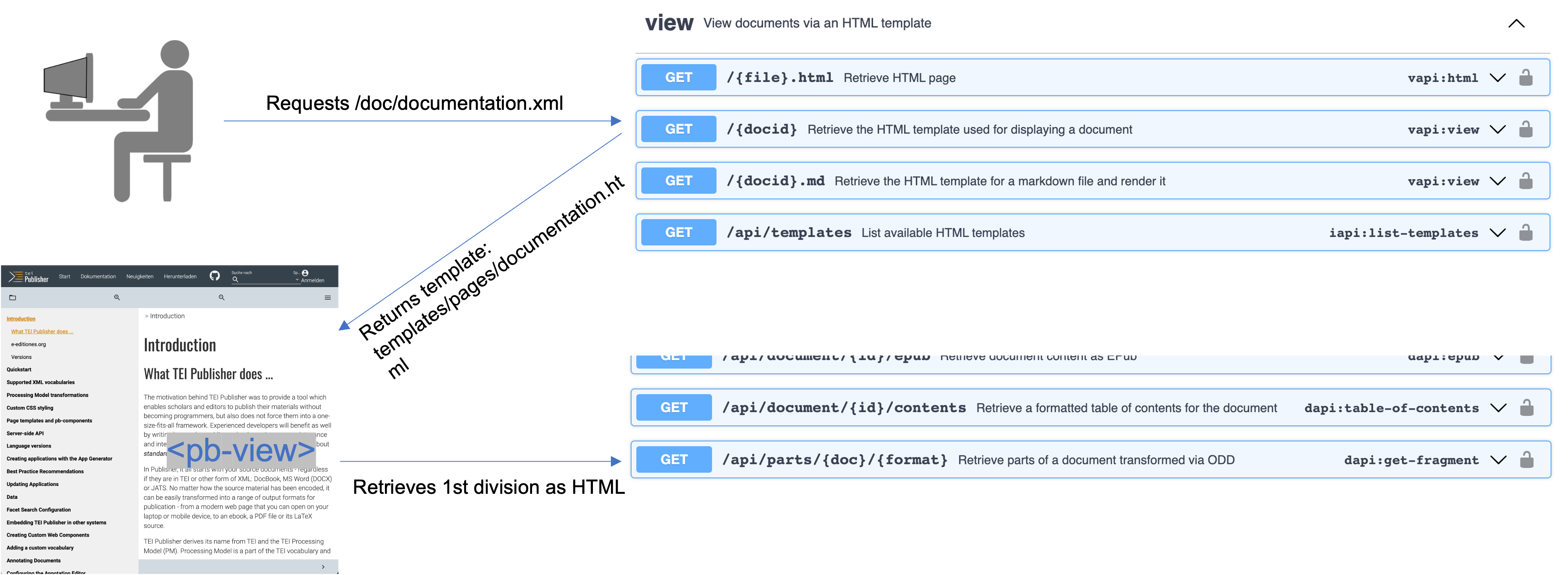Tutorial
Organization of the API
As can be seen on the API documentation page, the different endpoints are grouped into categories (“tags”) like documents, collection, odd etc. This grouping is just for your convenience and has no technical implications. You’ll also find that there is a separate section at the bottom, called Custom API. This is specifically for endpoints you want to add on top of TEI Publisher’s default endpoints. We’ll use this below.
More important is another distinction: looking at the endpoint paths we see two kinds: those starting with /api and those without prefix, which all appear under the view tag. In general we can say that URLs without /api prefix are intended to be directly called by the user when entering a URL into the browser or navigating a link, while those with /api prefix are usually not exposed to the user but instead consumed by other code components.
To illustrate this with an example: if you navigate to /exist/apps/tei-publisher/doc/documentation.xml in your browser, the endpoint called will be /{docId}. This endpoint inspects the requested document and determines that it should be displayed using the HTML template documentation.html (residing in templates/pages/documentation.html). It thus loads this template, expands it through eXist’s HTML templating (which does things like e.g. including the menubar and toolbar), and returns it to the browser.
The browser will start to render the received HTML. While doing so, it finds a bunch of custom elements (= webcomponents) and activates them. Among those webcomponents is the central pb-view on the page, which is supposed to display the actual documentation content. When it gets activated, it will send another request to the TEI Publisher API, which would say: “get me the next division of the documentation as HTML transformed via ODD”. This second request is triggered by the component (not the user directly) and thus starts with the /api prefix (in concrete it will go to /api/parts/doc%2Fdocumentation.xml/html).
To summarize, we can distinguish between
- user-facing endpoints, which produce HTML content to be viewed in a browser
- machine-processable API endpoints providing information to be consumed by components or other services
In the next section we learn how to create an endpoint to be used by a webcomponent, thus falling under category (2).
